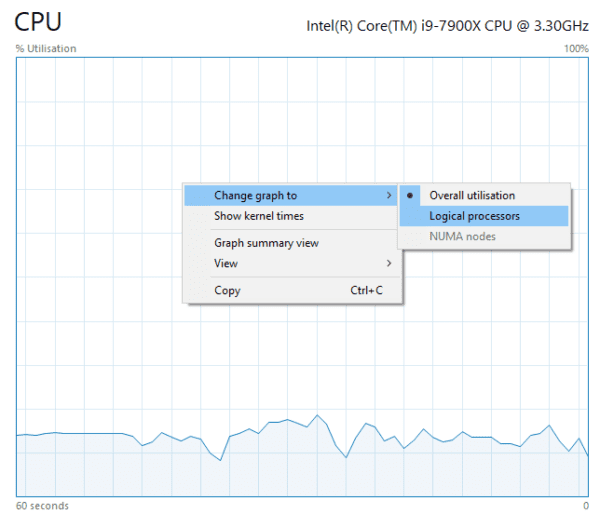

- #See your logical prossesers for mac how to#
- #See your logical prossesers for mac pro#
- #See your logical prossesers for mac software#
- #See your logical prossesers for mac mac#
Most likely, the Terminal app will be one of the top hits and already selected. That’s where Terminal lives.Ī quick way to launch Terminal is use Spotlight’s app launch technique: clicking on Spotlight’s magnifying glass in the Finder’s menubar and typing “terminal” in the search field. You can navigate to your Applications folder, where you will find the Utilities folder nested within. This is a Terminal command called uptime.ĭo not be frightened away because of the word “Terminal.” Yes, it can be risky if you willy-nilly go in and issue commands without knowing what they do, but there are some safeguards in place.
#See your logical prossesers for mac mac#
In this article, I’ll keep it real simple, and examine one of the tools to help you determine how much work your Mac is doing. However, new users to the Mac should not shy away from the MGG podcast because of this. This is the go-to podcast for all who want to learn about troubleshooting by gently diving into some of Mac’s (and iOS Device) technical aspects. Braun on The Mac Observer’s Mac Geek Gab podcast.
#See your logical prossesers for mac how to#
A great resource for understanding all the technical aspects and how to troubleshoot and fix issues, can be found by listening to Dave Hamilton and John F. There have been many discussions about the topic of troubleshooting performance issues, as there are just as many techniques and procedures. Our favorite fruit company gives developers and users a number of tools to monitor all this activity.
#See your logical prossesers for mac software#
However, because of any number of reasons, such as bugs in the program code or software incompatibilities just to name a couple, your Mac could get very much bogged down. There are other processes that are supposed to keep performance issues in check.

Sometimes, any computer can get bogged down and affect how smoothly and nimbly you can get your work done. There are data communications processes, system and data maintenance processes, processes that watch and manage network and security, processes that monitor and report on other processes, logging processes, power management processes, process processes… just tons of work to do… quietly and efficiently. Individual applications typically have a number of sub-processes, each handling separate tasks within the application. And, believe me, it’s a pretty large stick. Not only is it handling the productivity applications we know are running, but it’s actually doing more in the “background” than we can shake a stick at. This system-on-a-chip (SoC) signals that Apple is preparing to eventually move away from Intel and do its own thing in the same way as it does on iPhones and iPads.You wouldn't believe how immersed our Macs can get when working on numerous simultaneous tasks. The Apple M1 chipset is an Apple-designed chipset for the Mac notebooks and computers. However, under the hood, the M1 MacBook and Intel MacBooks are radically different. Check out the latest news and updates on Business Insider.Īpple’s new M1 MacBook might seem similar to the Intel MacBook lineup on the outside - the design and the basics remain the same.If you are confused between the new M1 MacBook and the Intel MacBook, read our comparison to make your decision.


#See your logical prossesers for mac pro#
The entry-level 13-inch MacBook Pro and Air are the first Macs to be powered by the new Apple M1 chipset.


 0 kommentar(er)
0 kommentar(er)
